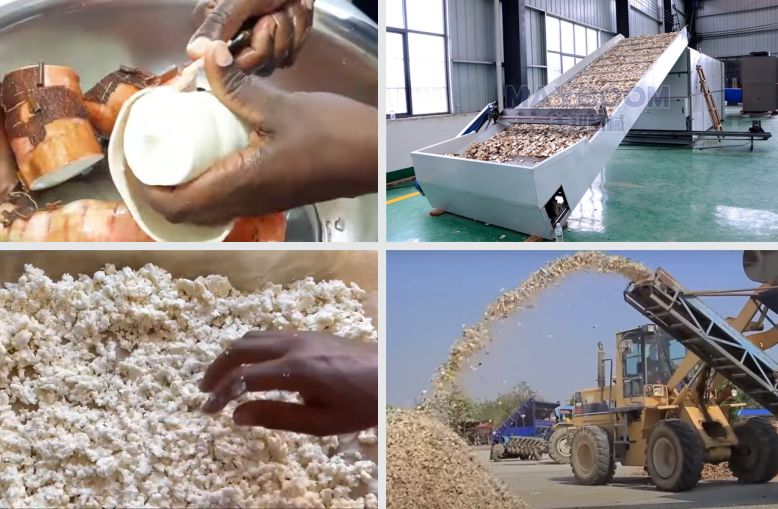- This topic is empty.
- AuthorPosts
- April 14, 2025 at 5:52 am #626460

Cassava is a vital food security crop for millions across the tropics, offering resilience in poor soils and under challenging climate conditions.
However, despite its abundance, the economic potential of cassava often remains underutilized due to inefficient processing methods and limited market access.
By enhancing cassava value chains through improved processing technologies, farmers and processors can reduce post-harvest losses, diversify products, and increase income. Upgrading cassava processing systems is key to unlocking its full commercial and nutritional value.
1. Reducing Post-Harvest Losses Through Efficient Handling
Cassava is highly perishable once harvested, often deteriorating within 48 hours if not processed promptly. Improved post-harvest handling and storage technologies—such as on-farm processing units, solar dryers, and airtight storage—extend shelf life and maintain quality.
These innovations allow farmers more time to transport and process the roots, reducing spoilage and ensuring a steady supply of raw materials for the value chain. Minimizing losses at this stage boosts overall efficiency and profitability.
2. Expanding Product Range With Modern Processing Equipment
Traditional cassava products like gari, fufu, and cassava flour can be produced more efficiently and at larger scales using modern machinery. Mechanized peelers, graters, presses, dryers, and milling machines significantly reduce labor, improve hygiene, and enhance product consistency.
This mechanization enables diversification into high-value products such as instant flakes, starch, ethanol, or industrial-grade flour. By moving up the value chain, producers and small-scale processors can tap into new domestic and international markets.
3. Improving Food Safety And Quality Standards
Adopting improved processing technologies also helps meet food safety and quality standards, which are essential for consumer trust and market access. Technologies that regulate moisture content, prevent microbial contamination, and ensure uniformity are crucial for scaling cassava-based products.
Standardization not only makes products safer and longer-lasting but also increases their appeal to formal retail markets and institutional buyers. Certification and packaging improvements further enhance branding and value.
4. Promoting Inclusive Growth Through Community-Based Processing Hubs
Enhancing cassava value chains through improved processing technologies offers significant opportunities for rural development. Establishing community-based processing centers can empower farmer groups, cooperatives, and women’s associations by providing shared access to machinery and infrastructure.
These hubs foster local entrepreneurship, reduce individual investment risks, and create jobs in processing, packaging, and logistics. This inclusive approach strengthens entire rural economies and ensures that value addition stays close to the source of production.
5. Integrating Innovation And Market Linkages
Technological upgrades in processing must be paired with strong market linkages to ensure sustainability. Mobile platforms, e-commerce tools, and digital extension services help farmers and processors access real-time market information, training, and buyers.
Partnerships with private sector actors, government programs, and research institutions can facilitate access to funding, innovation, and export channels. These integrations create a robust value chain where quality cassava products move efficiently from farm to market.
The pathway to a more profitable and resilient cassava sector lies in enhancing cassava value chains through improved processing technologies. By adopting modern tools and practices, stakeholders can minimize waste, improve product quality, and expand market reach.
These improvements not only increase farmer incomes but also support food security, rural development, and economic diversification. Investing in cassava processing innovation is more than a technical upgrade—it’s a strategic move toward sustainable agricultural transformation.
Read Also:Cassava Processing and Value Addition for Enhanced Food Security and Income Generation
- AuthorPosts
- You must be logged in to reply to this topic.

